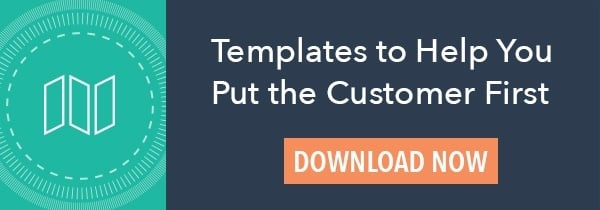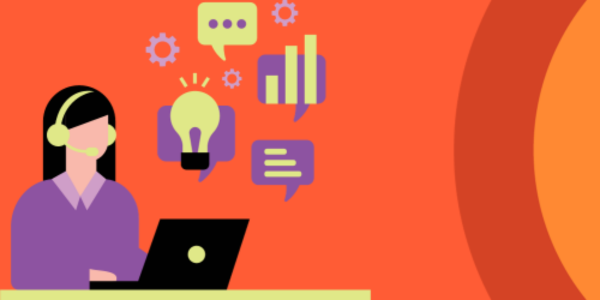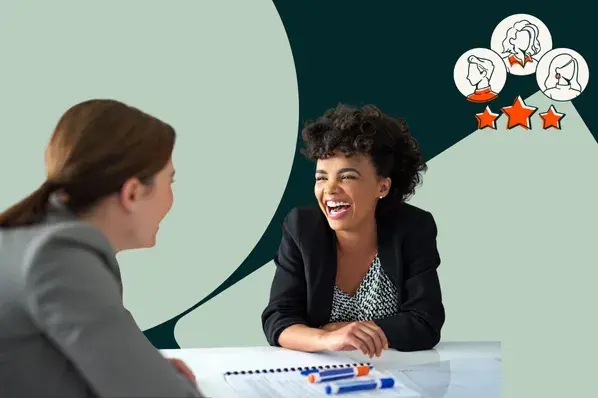Your goal should be to move your customer meetings from being merely tactical (e.g., ‘check-in with the customer on this project') to being strategic (e.g., ‘check-in on this project and ensure the customer's long term success').
To accomplish all goals at the same time, you're going to need to expand how you think about your customer meetings overall.
Let's explore ways you can improve your approach in the sections below.
Customer Meetings
The most common pitfall made in customer meetings is making the meeting all about your business when it should be all about the customer.
Put another way, if your meeting is a story, your customer is the hero.
Yet, so often you hear things like, "We'd like to show you this new feature we built." By positioning any update this way, you're making your company the hero — not your customer. Try instead, "We've released a new feature that streamlines your workflow. I'd like to show it to you and get your feedback. Does that sound good?"
This reframe does a few things. One, it talks about a benefit in terms of how it will impact your customer, which is in this case, streamlining your workflow. Secondly, it solicits a conversation by asking for feedback. This is engaging for the customer because you're making sure their voice is heard and appreciated. It's also useful for you, the vendor, as customer feedback is precious and you constantly collect it.
Lastly, by asking permission to present a topic, you're reinforcing the notion that this is your customer's time, and they're in control of it. So, for every topic you talk about, first make sure you've framed it in the context of what's in it for them.
Before you can host a meeting, however, you'll need to create an agenda. This document will guide your meeting and keep the conversation on track.
Let's discuss some ways to create this resource in the section below.
Customer Meeting Agenda
Every good meeting starts with a thoughtful agenda. That's because your agenda is your plan and your roadmap. When creating your agenda, start by asking this question: "Why did the customer agree to this meeting in the first place?"
Yes, you have your objectives. You want to help your customers succeed, nourish your relationships, identify churn risks, and suss out growth opportunities. But, more importantly, what are they expecting to accomplish by sharing time with you?
Here's a few best practices to keep in mind when planning your customer meeting.
1. Focus on the customer's goal.
Whatever their goal is, make it central to the agenda. Then, keep your agenda concise when possible. When arranging the list, start with general topics and move to more specific ones.
2. Don't overload your meeting.
Budget your time so you're likely to finish early, even if it means accomplishing less. If you must cover more topics than you have time for, make sure to send along instructions before the meeting to speed things up. Such instructions might read, "Please take a look at the attached report and be ready with questions as we only have about 15 minutes for this discussion."
3. Use action-oriented agenda items.
Especially questions, whenever possible. Another pitfall is using dull or vague agenda topics. For example, instead of "Training" try, "Where are the current training gaps?" And, instead of, "Updates" even a short, "What's new?" is much more engaging.
4. Share your meeting agenda at least a day in advance.
Or better yet, share at least a sketch of the agenda when you ask for the meeting. When appropriate, you can ask your customers to contribute to the meeting plan as well. Ask them what they would like to cover, and make sure to include it in the agenda.
Now that you have prepared for your customer meeting, it's time to run a great session.
Customer Meeting Best Practices
You need to think of your customer meetings like a mini-event. Face time with customers is incredibly valuable, but that's easy to forget because a meeting is something we get for free. But, when you think about the impact these meetings have on your business, you may realize you'd happily pay money to conduct them.
So, pretend you did pay for the time and approach your customer meetings with the same attention that a television producer might have. Put your effort, energy, and budget towards having a high-quality session and optimizing every minute that you have.
Aside from that, here are a few best practices you should keep in mind when running a customer meeting.
1. Prevent avoidable delays.
Test your conference call platform beforehand. If video tools require an installation, make that clear in the meeting invite. Plug your laptop into the projector and make sure it works. Do whatever it takes to ensure the full duration of the meeting is spent working and not resolving avoidable issues.
2. Pace the conversation.
If you're driving your customer meeting, you may have to speak a lot. To keep your customers active, interact with them constantly by asking a lot of questions. If more than a minute goes by where you haven't stopped talking, your customer may become bored and tune out.
3. Engage every participant.
Present to everyone, not just the most senior manager. For example, make eye contact with one person when you make a point. Then, address a different person when you make the next point. If you're meeting remotely, consider addressing specific people by name in the same manner.
4. Punt agenda items if you need to.
When you have an agenda and not much time, you may feel like you need to keep the conversation moving. But, when the customer talks, really stop and listen. Listening is one of the best ways to build customer rapport, and it can provide critical details that will make them more successful (and make your business more successful).
Chances are if they're talking, it's about something more important than what you've got planned. If listening means you can't adequately address something on the agenda, that's okay. Agree to follow up by email or schedule another meeting.
5. Close by confirming the next steps.
A good structure for closing a meeting is to recap what was discussed, assign responsibility for upcoming tasks, and set timelines if you have them. Doing so shows that you value the decisions from the meeting and that you're ready to control the outcome going forward.
6. End on a high note.
Be enthusiastic about your progress and showcase your excitement for your bright future with the customer. This will make them eager to meet with you again.
But, before they do meet with you the next time, you should reach out beforehand to follow-up on the first meeting you had. Not sure how? Take a look at the tips below to learn how to best follow up after a customer meeting.
Customer Meeting Follow-Up Actions
On the same day as the meeting, share your notes with your customer via email. Base your notes on the agenda, filling them in with slightly more background information, and include any decisions and next steps.
Also, link or attach any documents or pages that you chatted about during the meeting. For next steps, list out who's responsible and give a deadline if possible. You can do this formally in the notes themselves, or include it as part of a personal message, e.g., "Great meeting today. Justin will reach out by Friday to schedule the on-site with your team."
If appropriate, you can also use these notes to build enthusiasm for your next meeting. You may want to check in on the status of various challenges and most likely, you'll want to revisit all action items that came about from the last meeting —unless they're long since resolved and no longer relevant.
By bringing up the success of the last meeting and showing the impact the session had on your overall relationship, you're demonstrating an essential pattern to your customer: When you meet with us, things get done.
Now that you're familiar with the art of the customer meeting, you're ready to plan, host, and follow-up with your next customer. But, before you get started, save some time when creating your agenda by using this nifty template.
Customer Meeting Agenda Template
There are many different types of customer meetings, so no one template is going to work for everyone. Still, take a look at the framework below and you'll see that many of the best practices we listed above are built-in.
Template: Customer Meeting Agenda
Welcome
Welcome the customer, thank them for their time.
Project Status
- Updates
- Summarize 1-5 updates here in the agenda with 1-3 bullet points each
- Timeline
- Include in the agenda high-level deadlines/milestones
Training or Product Updates
Add any notes about training or product updates here.
Action Items
Include the name of the person responsible, the task, and due date.Summarize & Commit
End by reiterating the above action items. Call back to the original goal of the meeting to show how together you have achieved the goal.
--
Internal Notes
At the bottom of your agenda, include internal notes that are meant to be shared with your team only.
Positive Highlights
Assess constructive and productive moments of learning in your meeting.Risks & Opportunities
- Concerns and risks
- Upsell opportunities
For more tips on interacting with customers, read these customer service phrases you should avoid.
.png?width=112&height=112&name=Image%20Hackathon%20%E2%80%93%20Vertical%20(67).png)







![What Is Customer Goodwill? [Definition + Examples]](https://53.fs1.hubspotusercontent-na1.net/hubfs/53/Customer%20Goodwill.png)